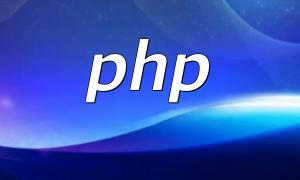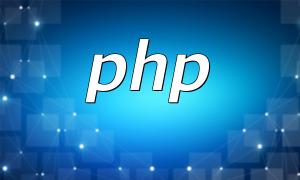PHP is a widely used server-side scripting language in web development, known for its simplicity, efficiency, and flexibility. To streamline the process of developing and debugging PHP projects, many developers choose to use an integrated installation environment. This article explores the key advantages and features of PHP integrated environments and provides a practical code example to help you better understand how they work.
With a PHP integrated environment, developers don’t need to manually configure the server, database, or PHP interpreter. Installation packages typically offer a straightforward setup wizard that allows you to get a local development environment running in just a few clicks. This saves time and enables developers to focus on coding rather than setup.
Integrated environments often come with support for popular databases like MySQL, MariaDB, and SQLite. Developers can easily select the appropriate database for their projects, simplifying testing and database operations.
Many PHP integrated environments include visual management tools such as phpMyAdmin, which make it easy to manage databases, view table structures, and execute SQL statements. These tools minimize the need for command-line operations and enhance development efficiency.
Integrated environments often come prepackaged with tools like Composer and Xdebug. These utilities assist with dependency management, debugging, and performance analysis, allowing developers to improve both code quality and productivity.
Most PHP integrated environments support one-click installation, guiding users through the setup process without requiring manual configuration changes. This makes it easy for beginners to get started quickly.
PHP integrated environments typically run on multiple operating systems, including Windows, macOS, and Linux. This ensures that developers can work in an environment compatible with their preferred system while maintaining cross-platform project stability.
Integrated environments often include debugging tools such as Xdebug, which allow developers to inspect variables, monitor code execution, and identify issues in real time. This capability is invaluable for error detection and logic optimization.
Some PHP integrated environments support multiple PHP versions and allow developers to switch between them easily. This feature ensures compatibility and flexibility for projects requiring different PHP versions.
Below is a simple PHP example demonstrating debugging with Xdebug in an integrated environment:
<?php
function sum($a, $b) {
$result = $a + $b;
return $result;
}
$x = 5;
$y = 10;
$result = sum($x, $y);
echo "The sum of $x and $y is: " . $result;
?>By enabling Xdebug within the integrated environment, developers can set breakpoints, step through code, and view variable values and execution flow—making it easier to identify and fix potential issues.
PHP integrated environments provide a convenient, efficient, and flexible solution for developing and debugging PHP applications. With simple setup, database integration, powerful debugging tools, and multi-version support, these environments are essential for improving development efficiency and maintaining high-quality code.









